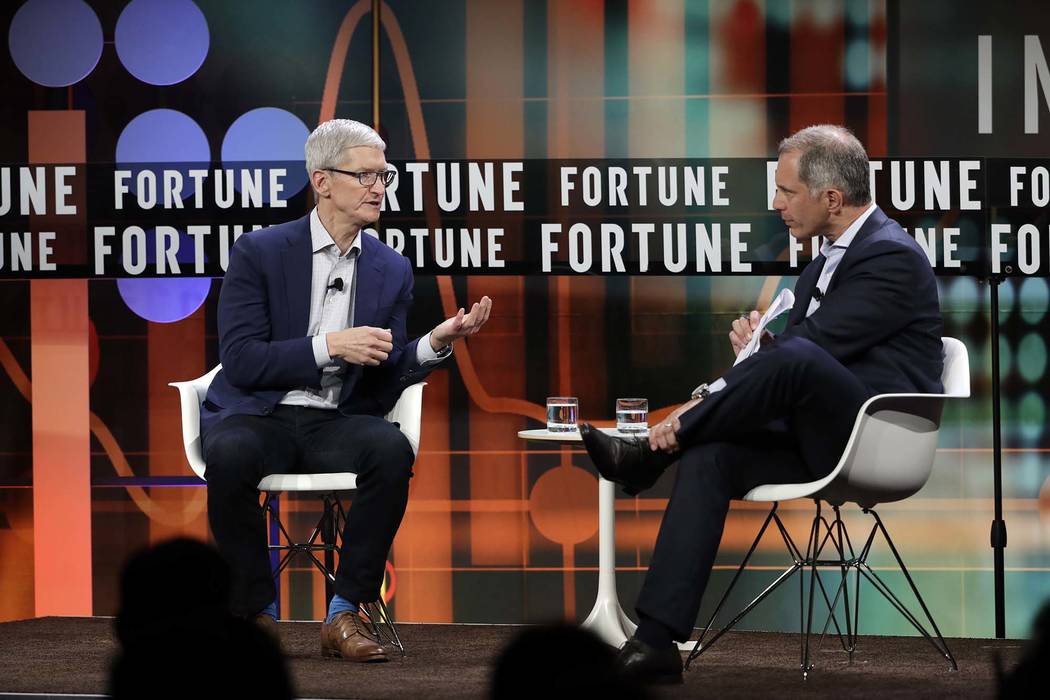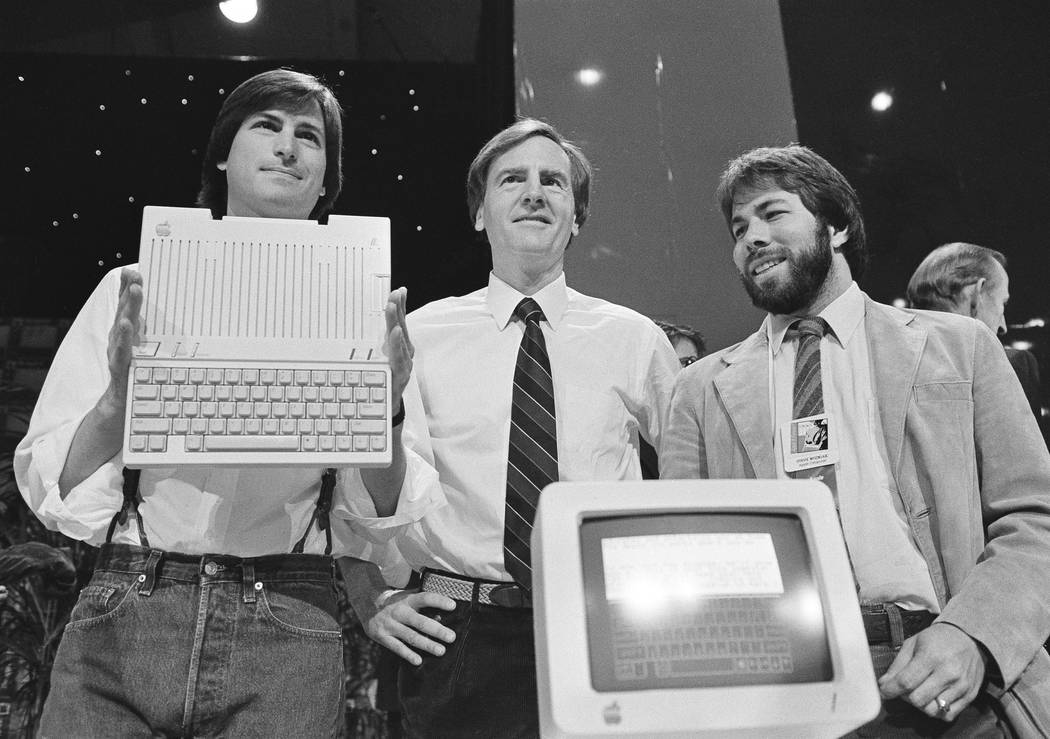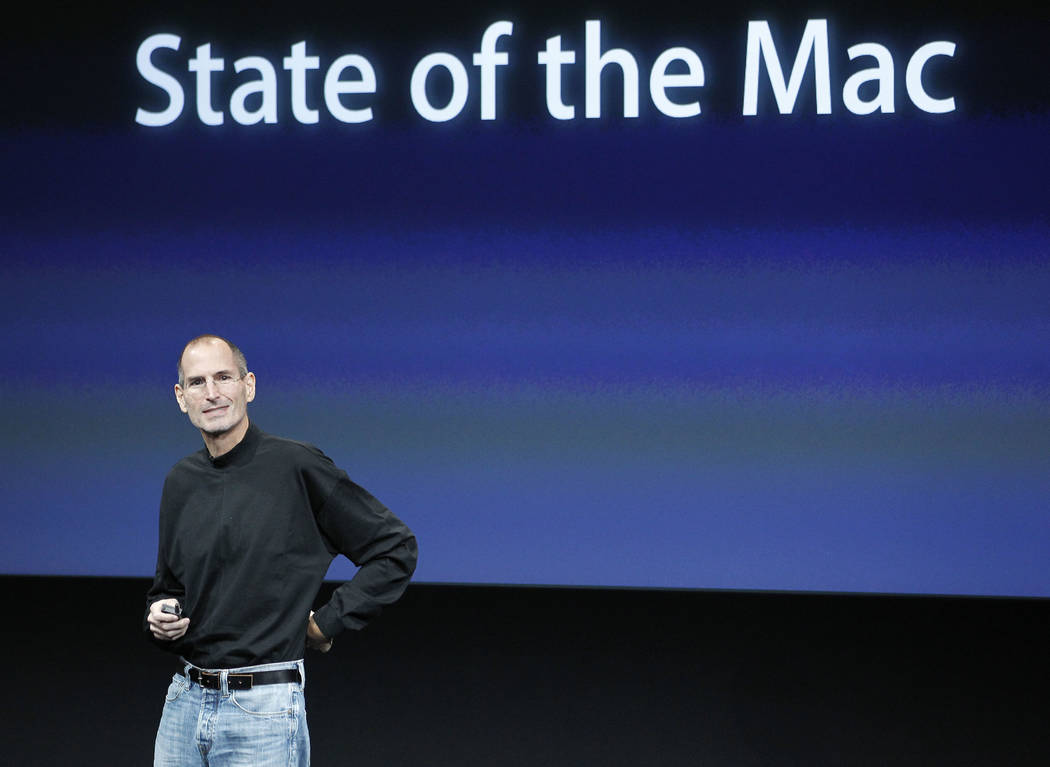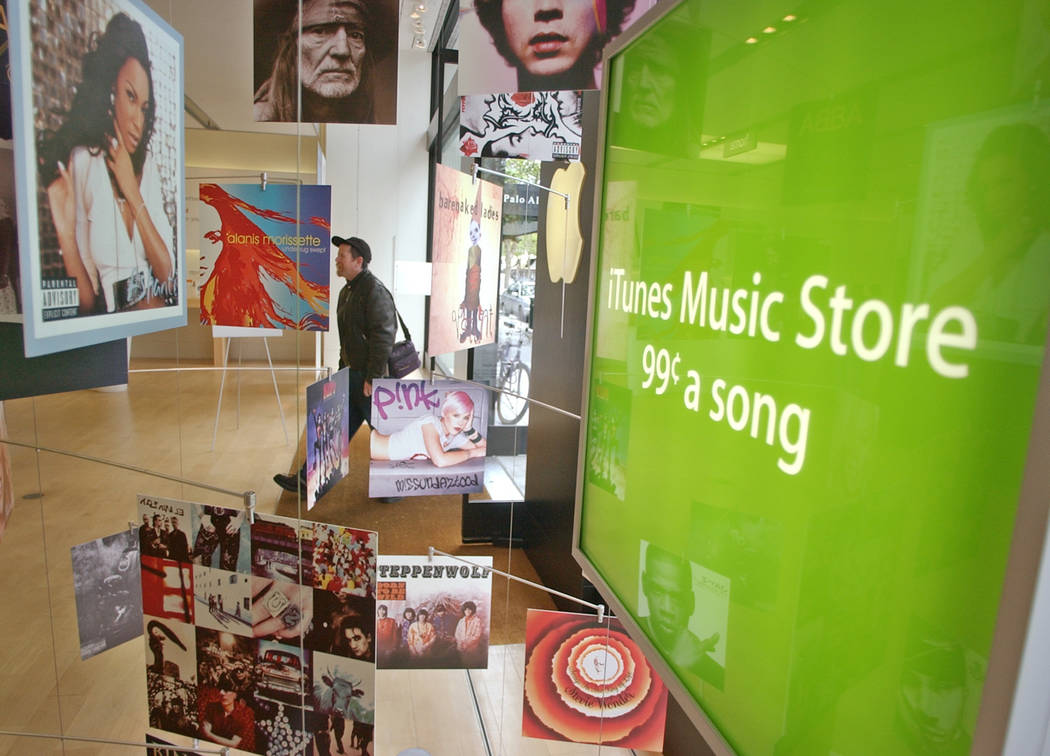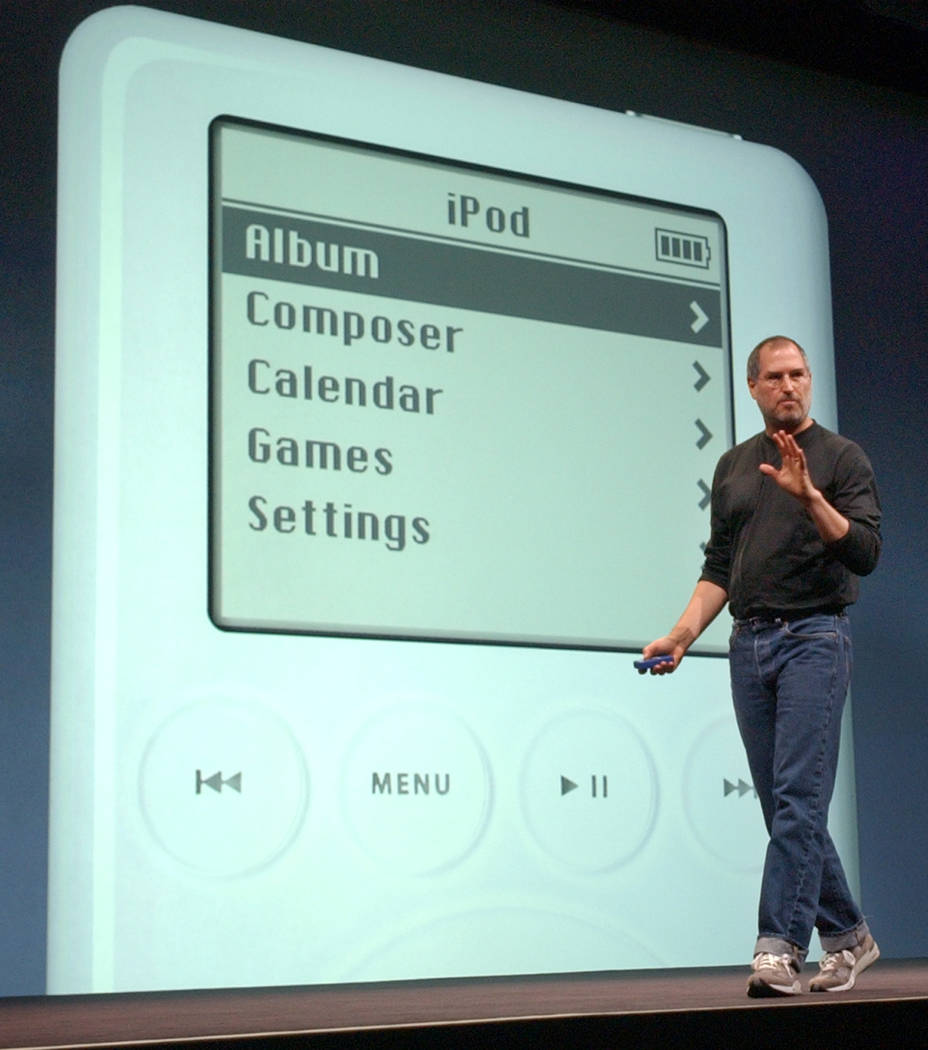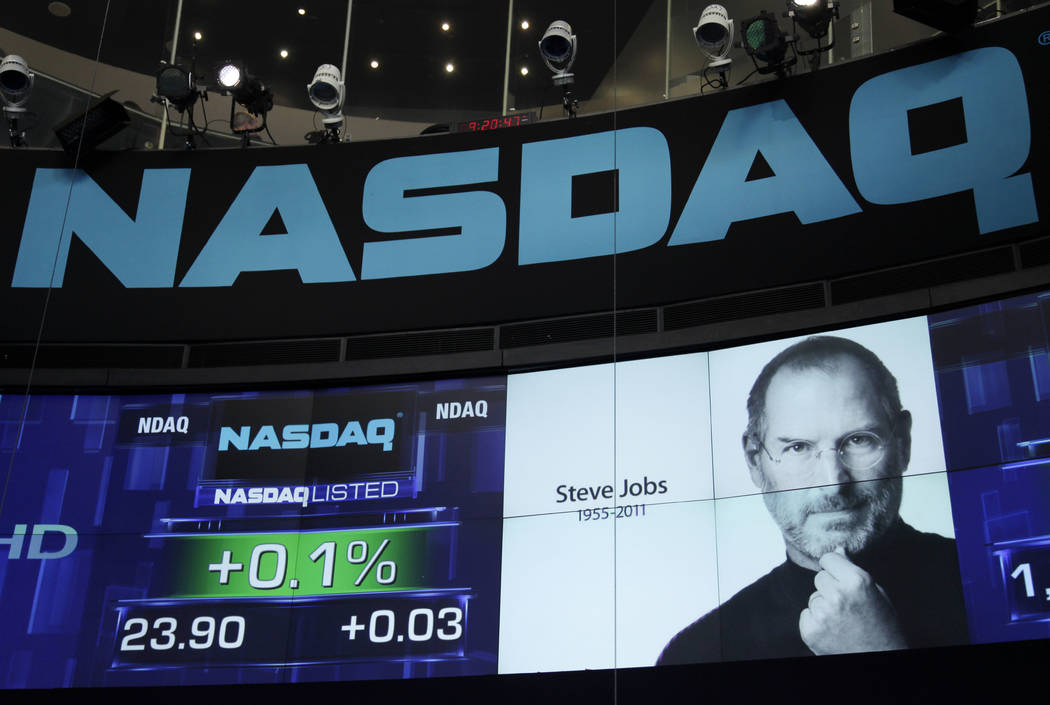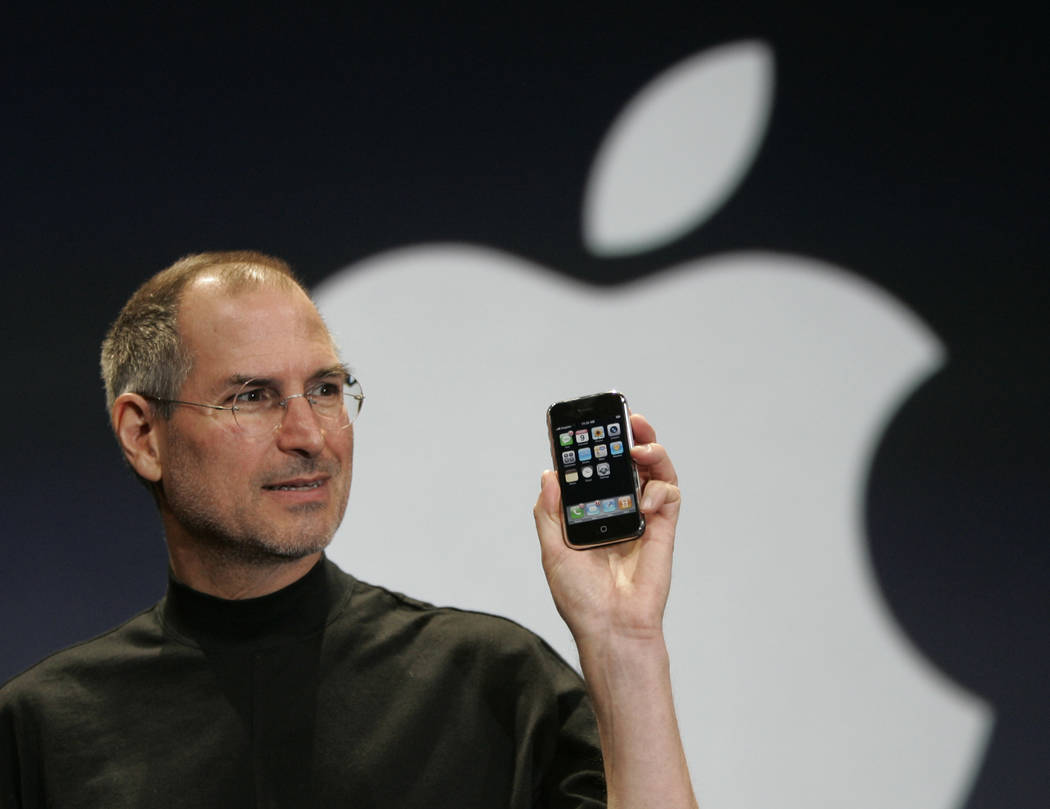Apple is first company to reach $1 trillion in value
SAN FRANCISCO — Apple has become the world’s first publicly traded company to be valued at $1 trillion, the financial fruit of stylish technology that has redefined what we expect from our gadgets.
The milestone reached Thursday marks the latest triumph of a trend-setting company that two mavericks named Steve started in a Silicon Valley garage 42 years ago.
The achievement seemed unimaginable in 1997 when Apple teetered on the edge of bankruptcy, with its stock trading for less than $1, on a split-adjusted basis., and its market value dropping below $2 billion.
To survive, Apple brought back its once-exiled co-founder, Steve Jobs, as interim CEO and turned to its archrival Microsoft for a $150 million cash infusion to help pay its bills.
If someone had dared to buy $10,000 worth of stock at that point of desperation, the investment would be worth about $2.6 million now.
Jobs eventually introduced popular products such as the iPod and iPhone that subsequently drove Apple’s rise. The stock has been surging this week as anticipation mounts for the next generation of iPhone, expected to be released in September.
Apple hit the $1 trillion mark when its shares reached $207.04 around midday in New York. They rose to an all-time high of $207.26 before falling back slightly. The shares are up around 22 percent so far this year.
Another company, Saudi Arabian Oil Co. could eclipse Apple if it goes through with plans for an initial public offering. Saudi officials have said the IPO would value Saudi Aramco, as the company is often called, at about $2 trillion. But until the IPO is completed, Saudi Aramco’s actual value remains murky.
Steve Jobs’ vision
Jobs’ vision, showmanship and sense of style propelled Apple’s comeback. But it might not have happened if he hadn’t evolved into a more mature leader after his exit from the company in 1985. His ignominious departure came after losing a power struggle with John Sculley, a former Pepsico executive who he recruited to become Apple’s CEO in 1983 — seven years after he and his geeky friend Steve Wozniak teamed up to start the company with the administrative help of Ronald Wayne.
Jobs remained mercurial when he returned to Apple, but he had also become more thoughtful and adept at spotting talent that would help him create a revolutionary innovation factory. One of his biggest coups came in 1998 when he lured a soft-spoken Southerner, Tim Cook, away from Compaq Computer at a time when Apple’s survival remained in doubt.
Cook’s hiring may have been one of the best things Jobs did for Apple. In addition, that is, to shepherding a decade-long succession of iconic products that transformed Apple from a technological boutique to a cultural phenomenon and moneymaking machine.
As Jobs’ top lieutenant, Cook oversaw the intricate supply chain that fed consumers’ appetite for Apple’s devices and then held the company together in 2004 when Jobs was stricken with a cancer that forced him to periodically step away from work — sometimes for extended leaves of absences. Just months away from his death, Jobs officially handed off the CEO reins to Cook in August 2011.
Although Apple has yet to produce another mass-market sensation since that changing of the guard, Cook has leveraged the legacy that Jobs left behind to stunning heights. Since Cook became CEO, Apple’s annual revenue has more than doubled to $229 billion while its stock has quadrupled.
More than $600 billion of Apple’s current market value has been created while Cook has been CEO. That wealth creation exceeds the current market value of every publicly traded U.S. company except Amazon, Microsoft and Google’s parent, Alphabet.
Apple Milestones
April 1976: Apple is founded by Steve Jobs, Steve Wozniak and Ronald Wayne.
June 1977: The Apple II computer is released.
December 1980: Apple goes public and its stock beings trading on the Nasdaq.
January 1984: Jobs unveils the Macintosh, the first mass-market personal computer to feature a mouse and a graphical interface on the display screen.
September 1985: Jobs leaves Apple's board after company's directors side with CEO John Sculley in a dispute between the two men.
December 1996: Apple buys Next Software, a company started by Jobs, for about $400 million. Jobs agrees to return to Apple as an adviser.
August 1997: Apple announces it's getting a $150 million infusion from archrival Microsoft to help keep the company afloat.
September 1997: Apple announces Jobs will serve as its interim CEO.
May 1998: Jobs unveils a new line of personal computers called the iMac.
May 2001: Apple opens its first retail stores in Virginia and California.
October 2001: Jobs unveils a digital music player called the iPod.
April 2003: Jobs unveils iTunes, a digital music store that initially only could be accessed on Apple devices.
August 2004: Jobs discloses he had surgery for a rare form of pancreatic cancer.
October 2005: Tim Cook is promoted to chief operating officer.
January 2007: Jobs unveils the iPhone.
January 2009: Jobs takes a six-month leave of absence to tend to his health, temporarily turning the reins over to Cook.
January 2010: Jobs unveils a tablet computer called the iPad.
August 2011: Jobs resigns as CEO and Cook succeeds him.
October 2011: Jobs dies.
September 2014: Apple announces the Apple Watch, its first new product since Jobs' death.
June 2015: Apple launches its music-streaming service.
June 2017: Apple announces its first internet-connected speaker, the HomePod.
September 2017: Apple unveils its first $1,000 phone, the iPhone X, in celebration of the product line's 10th anniversary.
August 2018: Apple becomes the first publicly traded company valued at $1 trillion.



